Rachel Fuller – 31 August, 2012
For an exhibition that sits within the greater theme of 'all our relations' the idea of connectedness is glaring, each work being over tightly related to the next, obvious aesthetic and thematic patterns laid on thick and repeated ad infinitum. I assume this heavy-handed approach was intentional. Unfortunately it makes for uninspiring viewing.
Sydney
Art Gallery of New South Wales
In Finite Blue Planet
27 June - 16 September 2012
Curated by Catherine de Zegher and Gerald McMaster, the 18th Biennale of Sydney revolves around the greater title all our relations, a theme of connectedness and reciprocity, of working together to harness the possibility in the present.
The major sites are minor exhibitions in themselves, having been separated thematically: the Museum of Contemporary Art hosts Possible Composition, Cockatoo Island presents Stories, Senses and Spheres and the Art Gallery of NSW In Finite Blue Planet.
In Finite Blue Planet is a self-explanatory title so I’ll save you the drill, but just so we are all on the same page it is also a fairly close summation of the exhibition as a whole. Prescriptive. Literal. And as with all art instances where title words are stretched or condensed, you would also do well to be warned of the curators’ meddling role.
For an exhibition that sits within the greater theme of all our relations the idea of connectedness is glaring, each work being over tightly related to the next, obvious aesthetic and thematic patterns laid on thick and repeated ad infinitum. I assume this heavy-handed approach was intentional (we are all engaged with each other, we all participate in each other’s lives, art and non-art audiences alike). Unfortunately it makes for uninspiring viewing. If we look at the exhibition as a story, it is the dull tale of a life blind to the importance of conflict, tension and contradiction. The neat bow does not a romping read make.
The exhibition is primarily held in the major exhibitions gallery of the AGNSW, a temporarily reconfigured-railroad gallery which forges a deliberate path by which visitors enter and exit. There are two additional works housed in the Aboriginal galleries on lower level 3, two installations by John Wolseley and a site specific piece by a collective, Postcommodity.
John Wolseley’s Murray Sunset Refugia with Ventifacts (2008-09) and Ventifacts from Mallee Scrub after Fire (2007-12) is a large installation of paper sheets that the artist has released into the burnt scrub of Northern Victoria over the past five years. Wolseley frees the paper to nature and weeks, months and sometimes years later Wolseley returns to the site to ‘harvest’ the paper. Visually, these bush-rubbed papers have been pinned roughly to the gallery wall as if they are presently caught in a breeze slipstream. Conceptually, the relationship between release and retrieval presents a strong dynamic, the space between providing the land with a body, a voice. Wolseley subtly achieves simplicity and yet further papers are dotted throughout the galleries - from pieces seemingly caught between the escalator and wall to every spare corner and corridor upstairs. One or two are effective in stringing the two spaces together, and yet there are so many they begin to stand in for the omnipresent curators, visible at every turn.
The second work downstairs, Do you remember when? (2012) is a collaborative work by Postcommodity, a group of four artists from Phoenix, USA. The artists have cut a slab from the floor of the gallery to reveal the soil beneath. The removed concrete block is present as an upright sculpture atop a plinth, facing down on the hole in the floor. As a sculpture this work could have been particularly compelling - the tension between the horizontal and vertical, the contrast between the concrete and dirt - and yet the artists have also added a hanging microphone to the space above the hole. We hear a soundtrack of Aboriginal music and assume that it is emanating from the earth. Again, we could use this as an analogy for the inability of the curators to edit, or honour the strength in simplicity.
The curation is particularly contrived when it comes to placement. One especially horrid moment is the posting of Farideh Lashal’s projection El Amal by Jorge Macchi‘s Globe (2008). Farideh presents the classic Charlie Chaplin scene from The Great Dictator where the Fuhrer dances alone with his world globe, a giant balloon. Upon exiting the small room we are faced with Macchi’s solitary watercolour, Globe (2008). A simple but striking work it depicts a globe, complete with institutional grey stand. Yet not only is the globe a globe, it is also a balloon, its tell-tale tie visible at the left of the painting. Having viewed a number of other terrific Macchi works throughout the gallery it saddens me to think that the curators thought were strengthening both Lashal’s and Macchi’s works by placing them side by side. As a viewer, all our minds do is mentally place ticks beside ‘pattern recognised’ and move on. By placing space between these works, one might be forced to dwell in that space - forming opinions, connections, contradictions. Instead, the curators force us to stare at their own smug reflection.
And this is just one of many pompous placements. Dorothy Napangardi’s bold paintings, Untitled (2004) and Sandhills (2006) are coupled with Subhankar Banerjee’s aerial photographic series depicting the migratory tracks of the caribou. Aesthetically both bodies of work appear as maps of tracks and are incredibly intricate and arresting, but by drawing them together I wonder whose favour the curators felt they were carrying out.
The individual works in In Finite Blue Planet are by all accounts interesting, broad ruminations on the overall theme, yet the exhibition is a perfect example of when curators are incapable of standing by the sidelines. Sure, it’s a biennale and I understand who the real art star is. However the role of the curator is to present works in the best possible light, subtly drawing connections between works that one might not initially see. In Finite Blue Planet just saw me wishing for a way out of the rigid and condescending themes to think in. Screaming for space. And perhaps that may just be the point.
Rachel Fuller
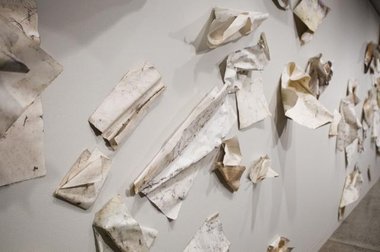
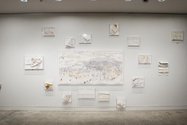
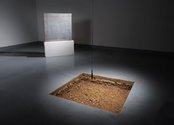

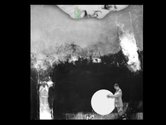
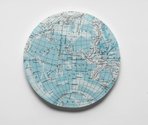
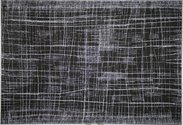

 Advertising in this column
Advertising in this column Two Rooms presents a program of residencies and projects
Two Rooms presents a program of residencies and projects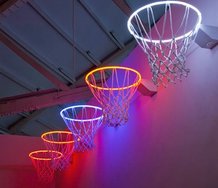
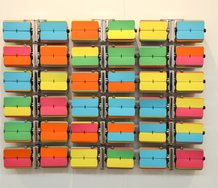

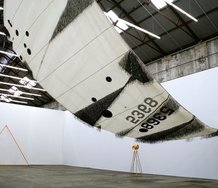
This Discussion has 0 comments.
Comment
Participate
Register to Participate.
Sign in
Sign in to an existing account.